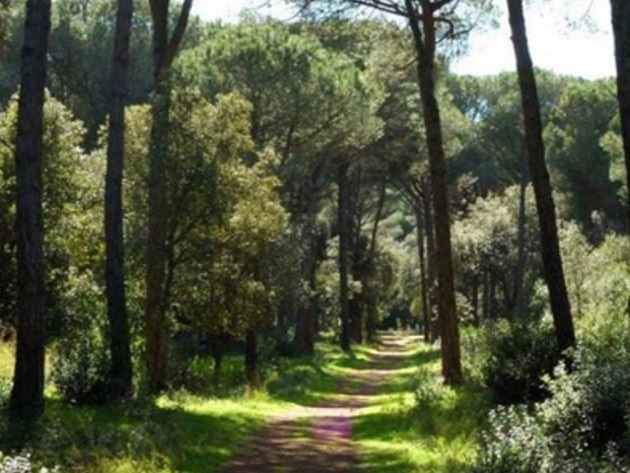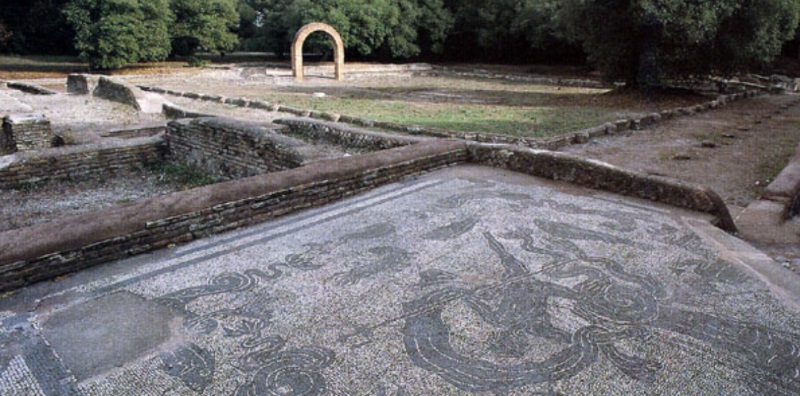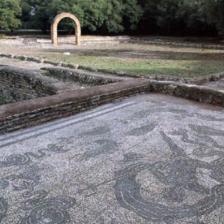

Established in 1996, the Riserva Naturale Statale del Litorale Romano (State Nature Reserve of the Roman Littoral), which covers about 15,900 hectares, 8,000 of which are in the territory of Roma Capitale, is one of the most unique in the entire national system of Protected Areas.
Its perimeter of more than 140 kilometres, with its jagged shape, includes a great variety of natural environments that have escaped urbanisation, such as evergreen forests, river banks and mouths, dunes, wetlands, expanses of Mediterranean maquis, and stretches of the Roman countryside of astonishing beauty. Agrarian landscapes are also widespread, dominated by the straight lines of canals, collectors, drainage ditches of the great coastal reclamations carried out since the end of the 19th century.
The morphology of the reserve is largely flat, furrowed by the Tiber for over 22 kilometres, by the numerous canals of the early 20th century drainage and by the terminal stretches of the Malafede, Mezzo Cammino, Magliana and Rio Galeria ditches.
The area preserves an exceptional historical and archaeological heritage that includes the Excavations of Ostia Antica, the Imperial Harbours of Claudius and Trajan, the Via Severiana, the Villa of Pliny, the Castle of Julius II, the Renaissance Tor San Michele, attributed to Michelangelo, the medieval Torre Boacciana, the medieval castles of Castel Fusano (Chigi) and Ostia Antica and the palaeontological sites of Castel di Guido and Malafede.
Starting from the sea and going inland, you can observe the coastal dune belts characterised by holm oak and pine forests, the Duna Antica, populated by oak forests, including turkey oaks, downy oaks and cork oaks, the alluvial plain with common oak forests, now completely cultivated, the coastal terrace of Macchiagrande, with holm oaks, cork oaks, hornbeams and thistles, the reclaimed coastal lakes.
The Dunes of Capocotta
The Capocotta beach is characterised by the presence of dunes and Mediterranean vegetation. Elevated wooden walkways guarantee access to the beach, preventing trampling from damaging the vegetation.
The Park of Castel Fusano and Villa di Plinio
The Park occupies the area of the Tiber Mouth and covers more than 1000 hectares. The pine forest, of artificial origin, was planted in the 1700s with holm oaks and pines, mostly for productive purposes. It contains the Villa di Plinio, the most important point of interest of the entire natural complex. It is also called Villa della 'Palombara', due to the presence of a large holm oak used in the 19th century for hunting 'palombi' (wild pigeons).
The Tenuta di Castel di Guido - Lipu Oasis of Castel di Guido
Two hundred and fifty hectares of Oasis, immersed in the 2500 hectares of the Castel di Guido farm produce barley, wheat and maize. In addition to cows for milk and cheese, the largest herd of Maremmana cows in Lazio grazes here: about 450 animals governed by horseback butteri. Passing and resident birds can be observed here, including swallows, swifts and kites. A cycle path of about 20 kilometres crosses the entire estate, where you can also buy dairy products and Maremma meat. Inside the Tenuta di Castel di Guido you can visit the area of the Roman Villa of Monte Colonnacce, datable between the 3rd century BC and 3rd century AD.
The Oasis is set in a vast area of low rolling hills that is also subject to climatic influences from the nearby coastal area. The landscape resembles the Roman countryside of the last century, with pastures, meadows, woods and hedges alternating with cultivated areas. Thanks to the great environmental diversity, therefore, animal species are particularly abundant: wild boars, foxes, badgers, hares, beech martens, Herman's tortoise, while the birds count dozens of nesting and migrating species. Thanks to its proximity to Rome and its conformation suitable for hikers of all ages, the Oasis is also ideal for short trips out of town. It has a Visitor Centre and two ring-shaped Nature Trails that cover its main environments, and there are ample spaces for parking and resting, even with camper vans.
Vegetation: Mediterranean maquis, pine forest and mixed woodland, wetland and dune vegetation, riverine environments, together with vast expanses of meadow and cultivated land, characterise the reserve, not forgetting the sea front, which in the territory of Roma Capitale runs along the reserve for 3.5 km, consisting of the Capocotta beach and the coast near the Idroscalo.
Informationen
 Condividi
Condividi
Location
Um mehr über alle barrierefreien Dienste zu erfahren, besuchen Sie den Abschnitt barrierefreies Rom.












































